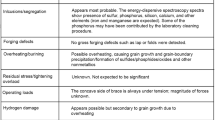Abstract
Diagnosability and syndrome decoding of a self-diagnosis model is studied with a conditional fault set. The conditional fault set is a fault set which is induced under such a condition that some subset of units are faulty (or fault-free).
The diagnosability defined on the model is generalized to include such information as (1) the maximum number of units to be identified as faulty; (2) the maximum number of units to be identified as fault-free; and (3) the maximum number of units whose states are definitely identified, when the upper bound on the number of faulty units is assumed.
Furthermore, we discuss the problem of finding minimal fault set. This problem is formulated in mathematical programming with the conditional fault set. A syndrome decoding algorithm is also presented which uses the conditional fault set in a similar manner to Hamming distance used in syndrome decoding of error-correcting codes.
Similar content being viewed by others
References
C. V. Ramamoorthy, A Structural Theory of Machine Diagnosis,AFIPS Proc. Spring Joint Computer Conf.,30:743–756 (1967).
J. P. Hayes, A Graph Model for Fault Tolerant Computing Systems,IEEE Trans. on Comput.,C-30, 6: 414–422 (June 1976).
C. R. Kime, An Abstract Model for Digital System-fault Diagnosis,C-28, (10):754–767, (October 1979).
A. D. Friedman and L. Simonici, System Level Diagnosis,Computer, pp. 47–53 (March 1980).
F. P. Preparata G. Metze, and R. T. Chien, On the Connection Assignment Problem of Diagnosable Systems,IEEE Trans. on Elec. Comp.,EC-16(6):848–854 (December 1967).
F. Barsi, F. Grandoni, and P. Maestrini, A Theory of Diagnosability of Digital Systems,IEEE Trans. Comput.,C-25 (6):585–593 (June 1976).
C. R. Kime, An Analysis Model for Digital System Diagnosis, ibid.,C-19 (11):1063–1073 (November 1970).
S. L. Hakimi and A. T. Amin, Characterization of Connection Assignment of Diagnosable System,IEEE Trans, on Comp.,C-23 (1):86–87 (January 1974).
F. J. Allan, T. Kameda, and S. Toida, An Approach to the Diagnosability Analysis of a System,C-24 (10):1040–1042 (October 1975).
P. Maestrini and C. L. Liu, On the Sequential Diagnosability of a Class of Digital Systems, inProc. Intl. Symp. Fault-Tolerant Computing, pp. 112–115 (1981).
A. D. Friedman, A New Measure of Digital System Diagnosis, Digest of Papers,Intl. Symp. Fault Tolerant Computing, Paris, France, pp. 18–20 (June 1975).
K. Y. Chwa and S. L. Hakimi, On Fault Identification in Diagnosable Systems,C-30 (6):414–422 (June 1981).
A. T. Dahbura and G. M. Masson, A Practical Variation of the 0(n 2.5) Fault Diagnosis Algorithm, inProc. Symp. on Fault Tolerant Computing, pp. 428–433 (1984).
Y. Ishida, N. Adachi, and H. Tokumaru, A Topological Approach to Failure Diagnosis of Larger-scale Systems,IEEE Trans, on SMC,SMC-15 (3):327–333 (May 1985).
C. L. Liu, Introduction to Combinatorial Mathematics, New York, McGraw-Hill, (1968).
Rights and permissions
About this article
Cite this article
Ishida, Y., Adachi, N. & Tokumaru, H. An analysis of self-diagnosis model by conditional fault set. International Journal of Computer and Information Sciences 14, 243–259 (1985). https://doi.org/10.1007/BF00987037
Received:
Revised:
Issue Date:
DOI: https://doi.org/10.1007/BF00987037




